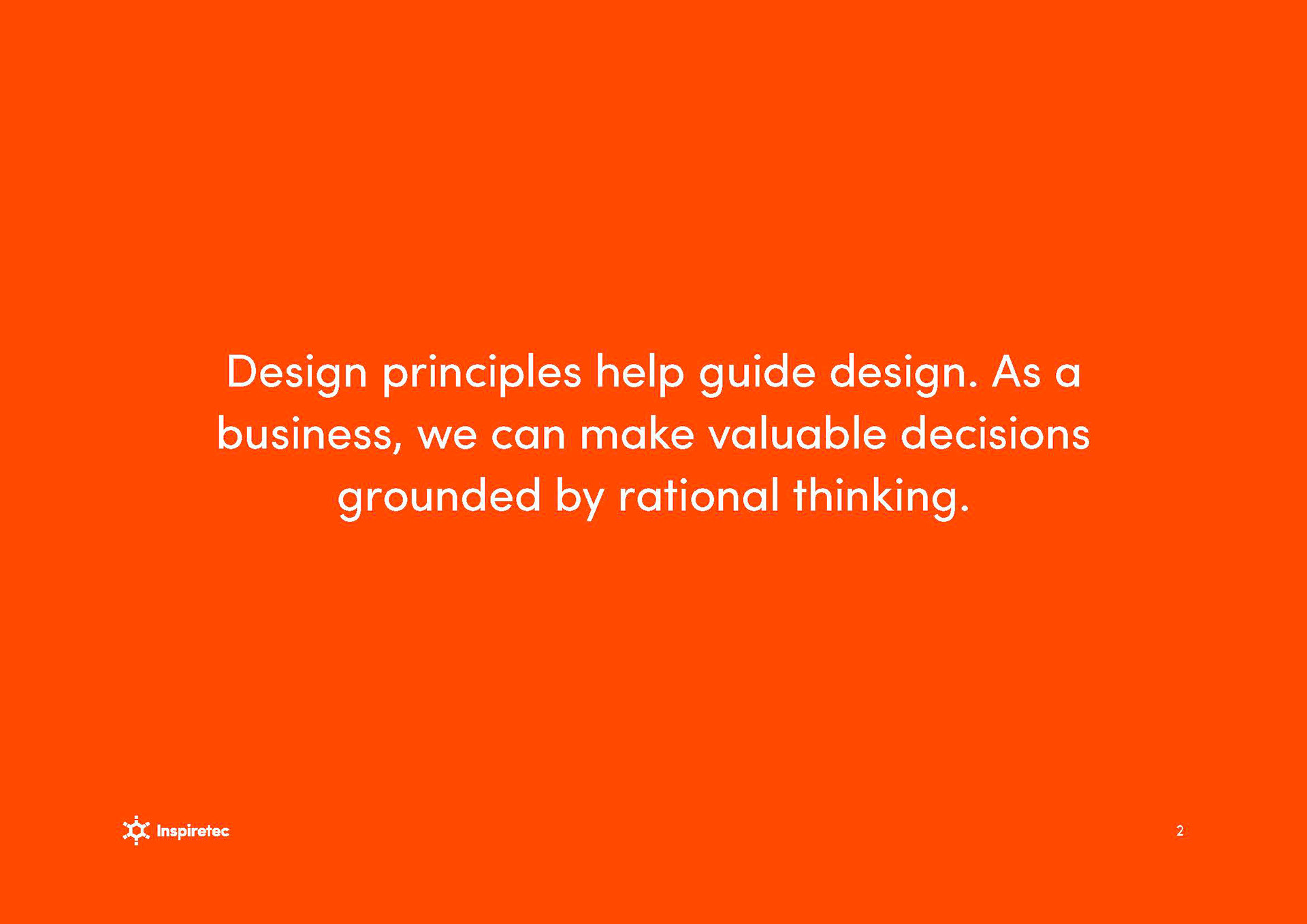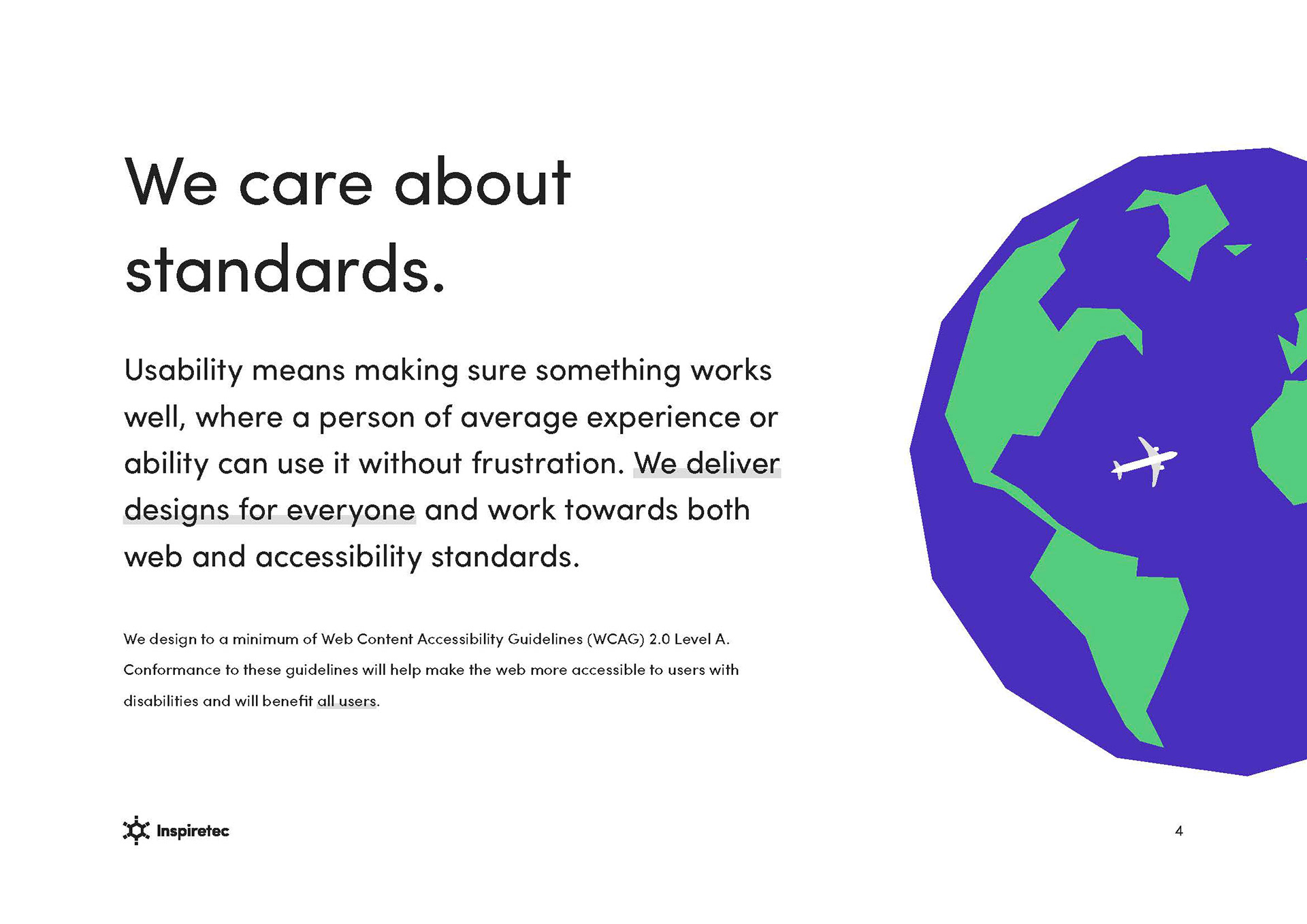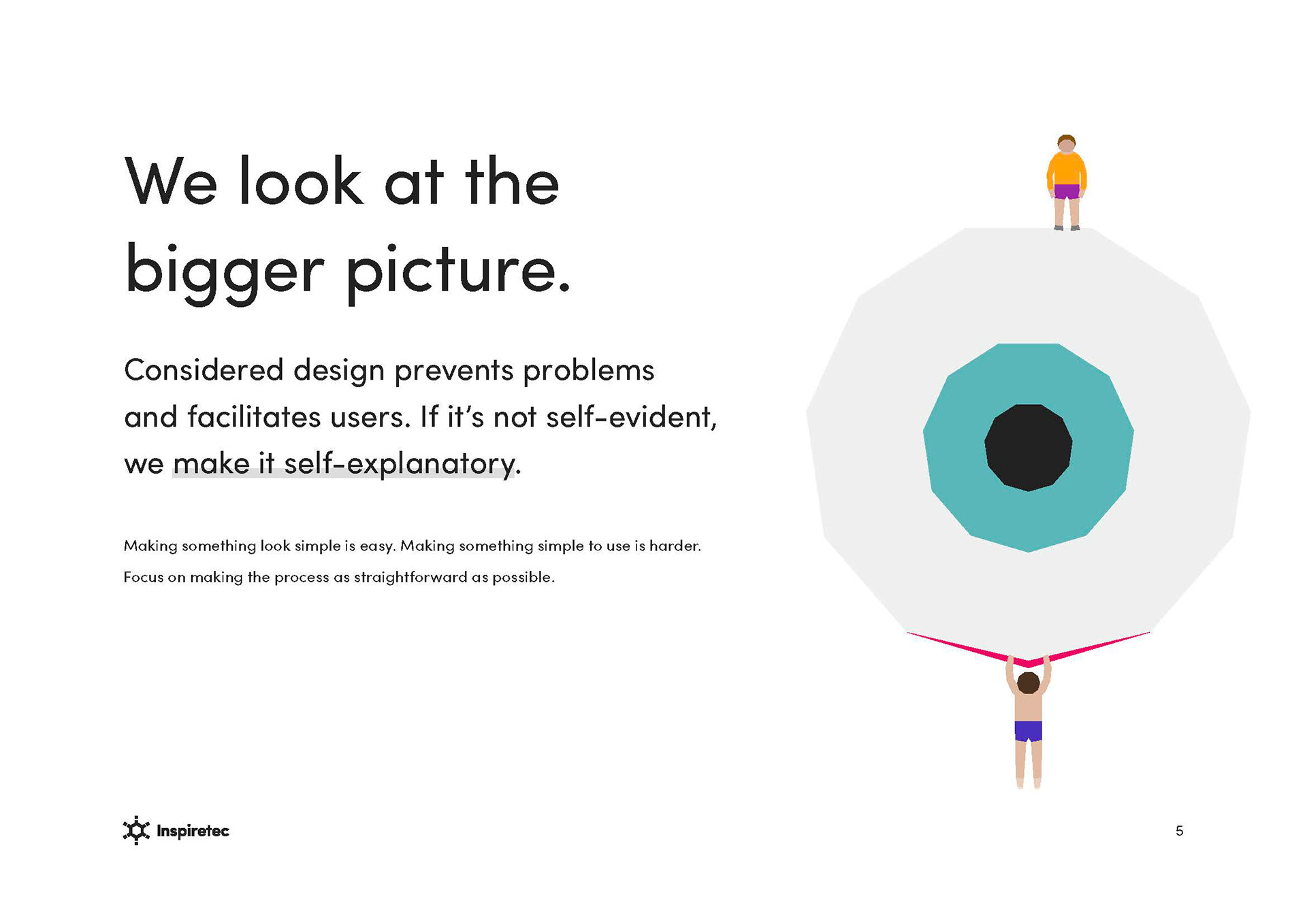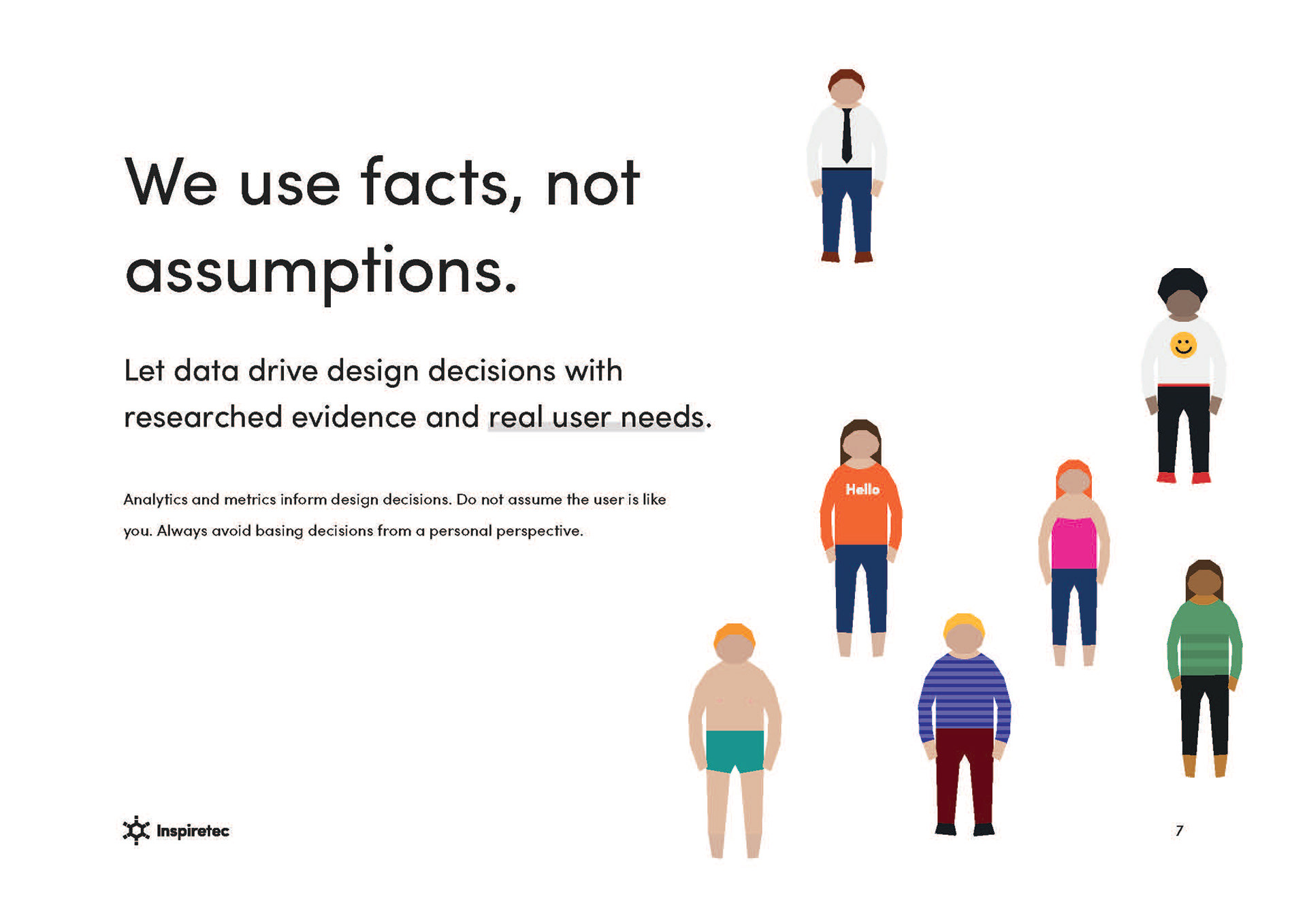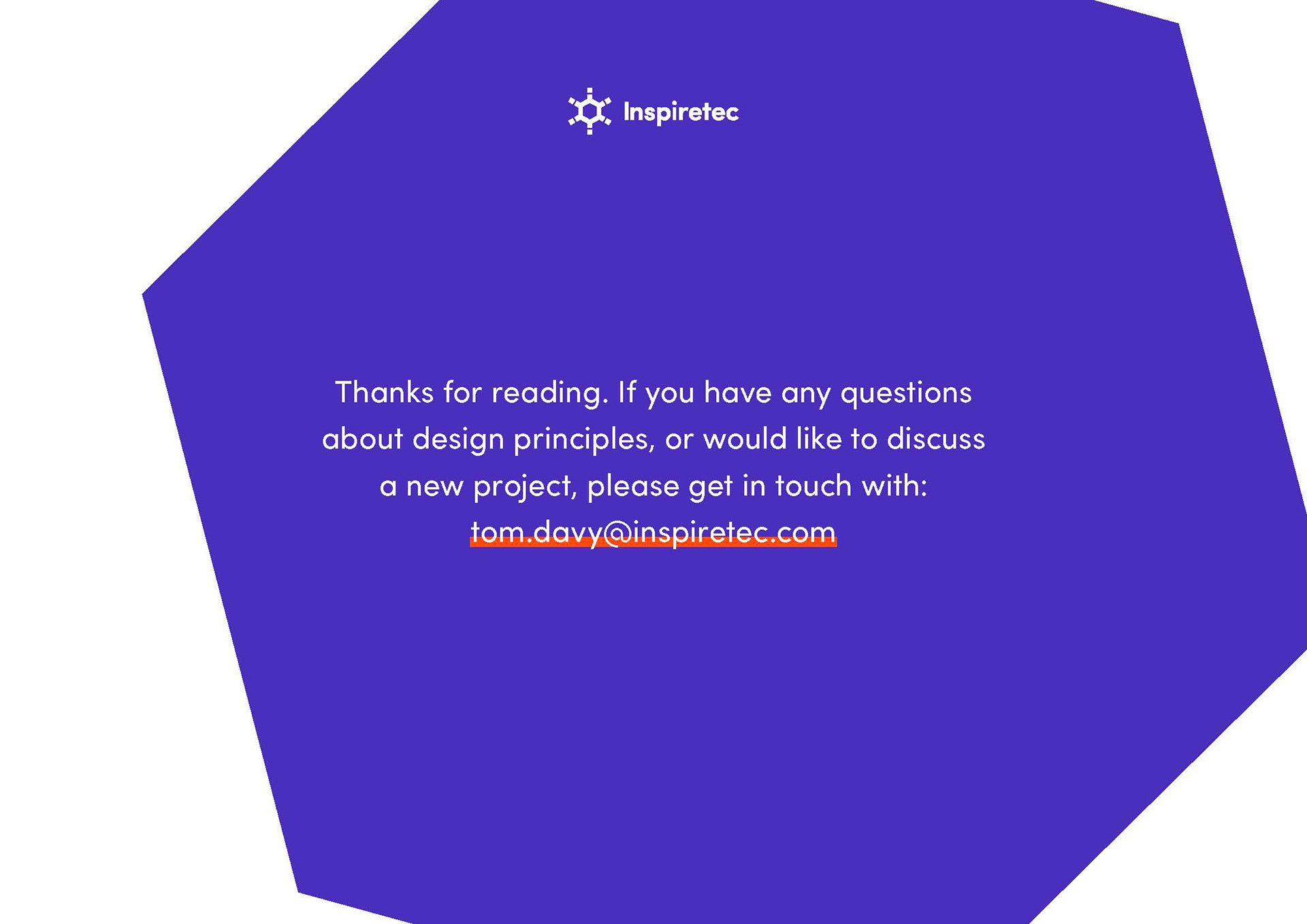Case Study: Cultivating a User-First Design Culture at Inspiretec
Objective
Establish a design process and culture that transitions the organisation into a user-first mentality, improving collaboration and alignment across multidisciplinary teams and with clients.
The Challenge
Transitioning Inspiretec into a user-first organisation required a fundamental shift in how teams operated. Collaboration across disciplines was fragmented, and client expectations often conflicted with internal processes. To tackle this challenge, I focused on:
• Bringing together multiple disciplines into cross-functional teams to foster collaboration and open communication.
• Addressing the difficulties of managing team dynamics, differing solutions, and aligning decision-making within large teams and with clients.
• Streamlining processes to minimise friction, particularly from the client side, where varied internal practices created misalignment.
Approach
1. Mapping the Current State
Documentation & Service Map Creation: During my first three months, I documented existing processes and created a detailed service map to identify touchpoints and opportunities for improvement in end-to-end delivery.
Insights revealed significant friction originating from client-side processes, where inconsistent expectations of design and delivery posed challenges.
2. Bridging Internal and Client Alignment
Customer-Facing Design Process: I developed a design process that could be shared with clients to set clear expectations. This process was introduced during project kick-off meetings to align both internal teams and clients on ways of working.
Design Principles: To guide delivery, I introduced a set of design principles. These principles served as a loose framework for making rational, user-centered decisions, providing clarity for both teams and clients.
3. Collaborative Creation of Design Principles
Workshop Preparation: I collected over 80 design principles from nine different organisations, spanning digital agencies, consultants, government departments, and industry experts. Each principle was presented on cards with descriptions and authorship.
Workshop Execution: Team members reviewed and discussed principles, aligning them with business and user needs. Cards were grouped by common themes and ranked by preference, with unsuitable principles discarded. Discussions explored the cost and feasibility of adopting each principle within the business context.
4. Stakeholder Engagement
Buy-In from Decision Makers: With a clear direction established, I engaged stakeholders to secure organisational buy-in. This step was critical for ensuring the principles would be embraced and applied consistently.
Consultation with Teams: I consulted senior developers, sales colleagues, and other key personnel to ensure the principles provided helpful guidance without imposing unnecessary constraints.
Outcome
Adoption of Principles: The principles were adopted across the organisation and used to guide both internal processes and client engagements. They were prominently displayed in the office, shared on social channels, and incorporated into all client kick-off meetings.
Improved Collaboration: Cross-functional teams operated with greater efficiency, supported by shared goals and clearer communication.
Client Alignment: Clients gained a clearer understanding of the design and delivery process, leading to smoother projects and better outcomes.
Key Takeaways
• Establishing a user-first culture requires active collaboration, clear communication, and alignment across all stakeholders.
• Design principles offer orientation without limitation, providing teams with the freedom to innovate within a structured framework.
• Early engagement with both internal teams and clients is critical for achieving buy-in and ensuring successful implementation.
By fostering a design culture grounded in user-first principles, I helped Inspiretec deliver better outcomes for both the business and its clients, proving that a collaborative approach can drive meaningful change.

